Features
The technical implementation of the project includes the following steps:
- Audit the lab hardware, evaluating its compliance to the technical requirements of the project by checking the PCs and its networking;
- Conclusion of pending works to fulfull technical compliance of the lab;
- Deployment of the server system;
- Deployment of the client PCs in semi-automatic mode;
- Quality check/test based on the technical objectives of the project.
Deployment of the server, client PCs and the lab network is usually completed before the beginning of the training session, so that the lab can be available in its final form also for the training purposes.
The proposed technical solution has the following objectives:
- Centralized authentication. Like in enterprise environments, where accounts and permissions to available infrastructural resources are managed at a single point, our solution also provides the ability to handle creation, modification, changing the password and granting permissions on the entire infrastructure or part of it from a single web console, available from any PCs inside the lab;
- Sharing files. Sharing is an integral part of our project and a key feature in the classroom context. Our solution allows file sharing using common enterprise-level protocols, compatible with other proprietary operating systems, to allow maximum efficiency in sharing;
- Web content filtering. It is important to make students aware of the non-positive and non-instructive nature of some web sites. We believe it is essential to provide a safe and trusted environment for teaching in the lab; we provide it by activating a web traffic filtering solution that comply with the law and with the specific requirements of the individual class. Our solution includes customizable web filters with a few clicks from the system administrators;
- Optimize bandwidth connectivity. Our solution implements an outbound bandwidth optimization system (forward proxy) for Internet surfing and OS upgrades, to ensure efficient and affordable performance even for schools that do not have good quality connections;
- Efficient data backup of the lab. We all know how important your data is, so backupping important file is crucial. Our solution implements an efficient backup system with easy-to-use interface for the administrators;
- Roaming profiles. All the data and configurations of all users will be on the server. This allows the solution to be client-independent: in case of malfunctioning on the clients, they can thus be replaced without worrying about restoring their content. Also, this further helps the centralised management of the backups.
The solution, despite its high technological content, has been studied so that the laboratory can be managed by people without special technical skills.
Below is a summary of the features that teachers and administrators will have available for their daily activities.
Teachers
Inside the network, besides the server, there will be a dedicated PC for the teacher and some PCs for students.
The teacher’s PC will be similar to the students’ PCs except for a software: Epoptes.

With this application, the teacher is able to monitor all students’ PCs, checking what they are doing, providing them remote support, locking their screen, switching off their PCs and sharing the teacher’s screen to show part of the lesson, for example.
All PCs will have a graphical interface similar to the following with a georgeous range of applications, some of which are already mentioned in the main page of the LibreSchool Project.

Beside the preinstalled applications, you can install many others by choosing from a repository that includes tens of thousands of them. Below the screenshots of some of those.
LibreOffice, a famous office productivity suite that has been adopted by many public administration and private companies in many countries

Geogebra to study of geometry, algebra and analysis

Freeplane, an intuitive application for creating mind maps
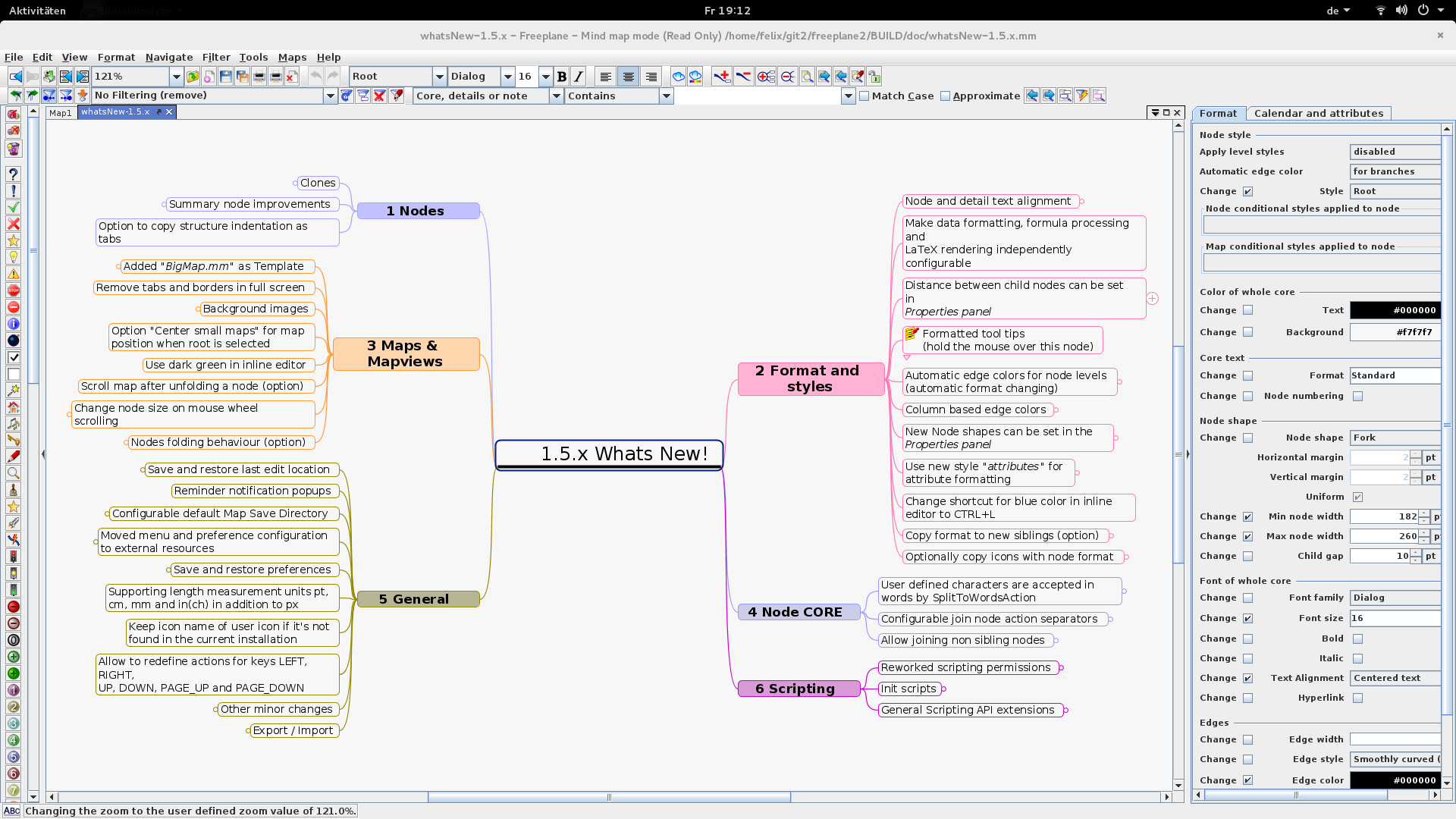
Gimp, used for photo-editing, free-form drawing, converting between different image formats and more specialized tasks.
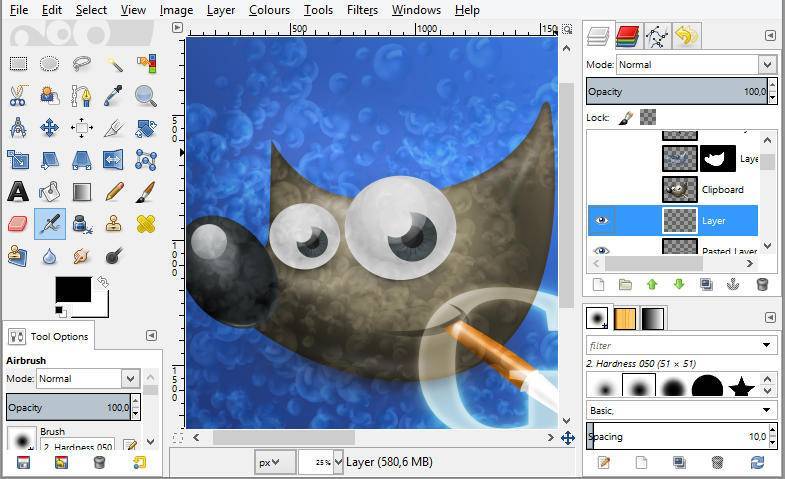
Fritzing, free software for the design of electronics hardware, to support designers and artists ready to move from experimenting with a prototype to building a more permanent circuit. It was developed at the University of Applied Sciences of Potsdam.
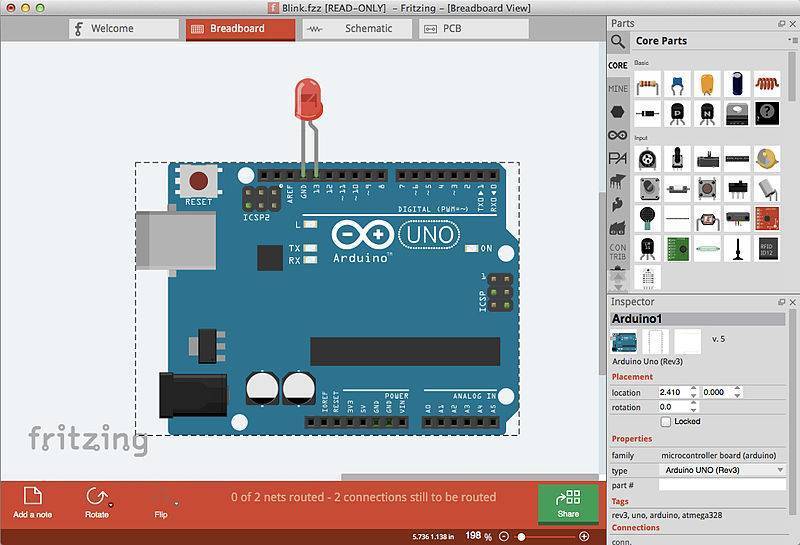
Scribus, is a desktop publishing (DTP) application, designed for layout, typesetting, and preparation of files for professional-quality image-setting equipment. It can also create animated and interactive PDF presentations and forms. Example uses include writing newspapers, brochures, newsletters, posters, and books.
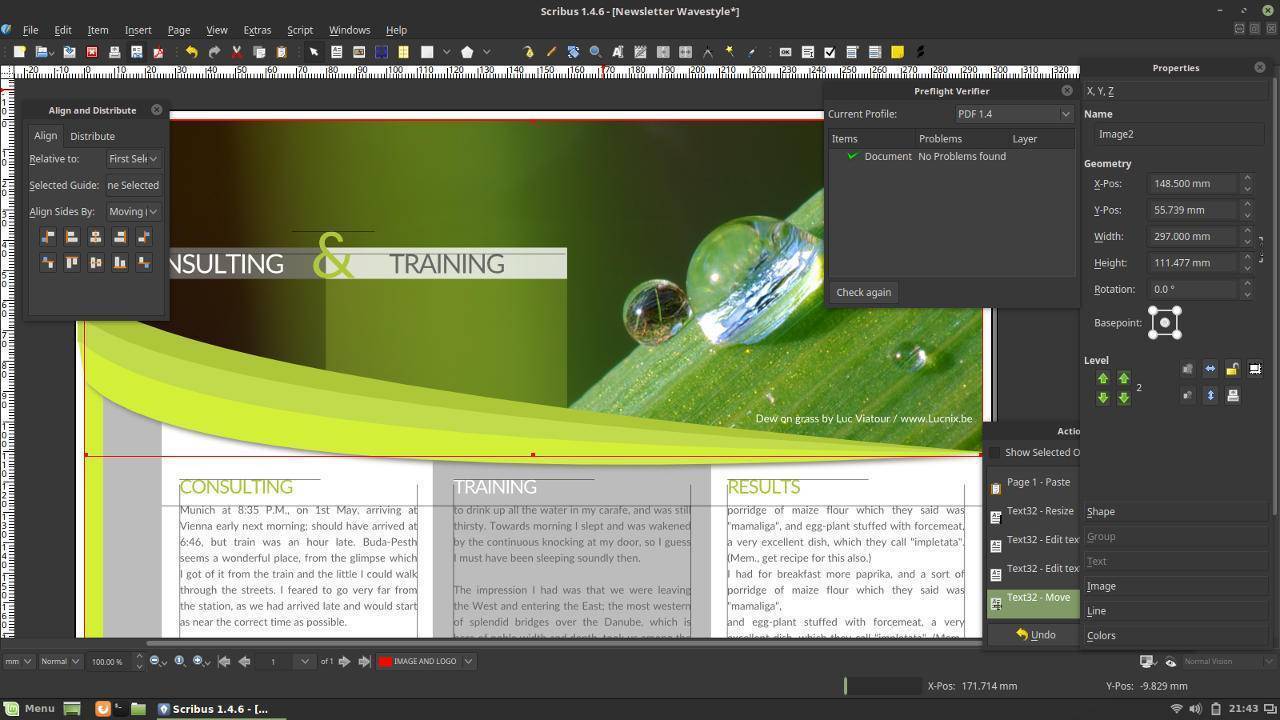
Openshot, powerful digital video editing software
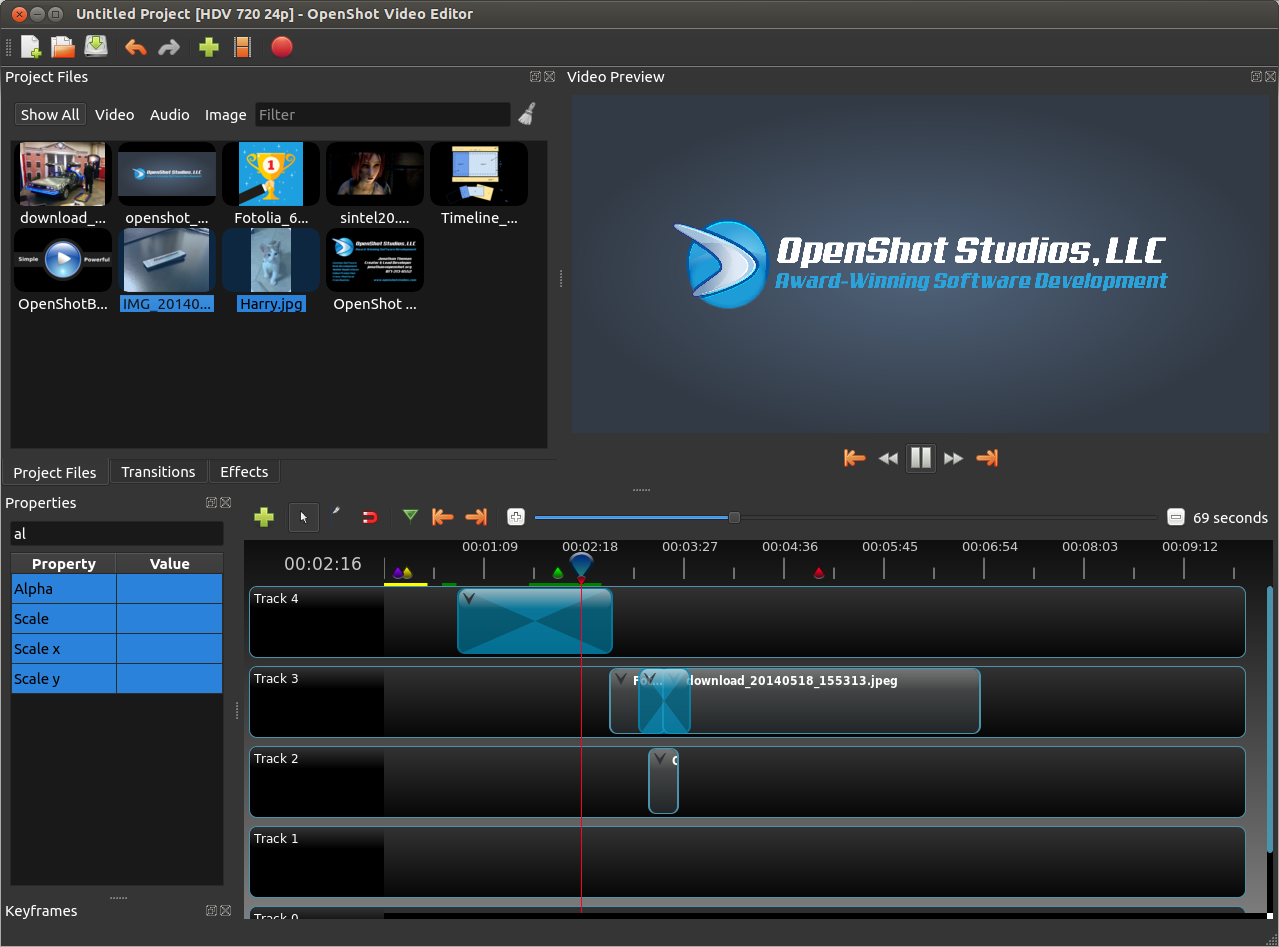
Stellarium, a great virtual planetarium also used by the astronomical park La Torre del Sole of Brembate Sopra (BG - Italy)

Tux Paint is a raster graphics editor geared towards young children. The user interface is intuitive and utilizes icons, audible feedback and textual hints to help explain how the software works. The brightly colored interface, sound effects and cartoon mascot (Tux, the mascot of the Linux kernel) are meant to engage children.
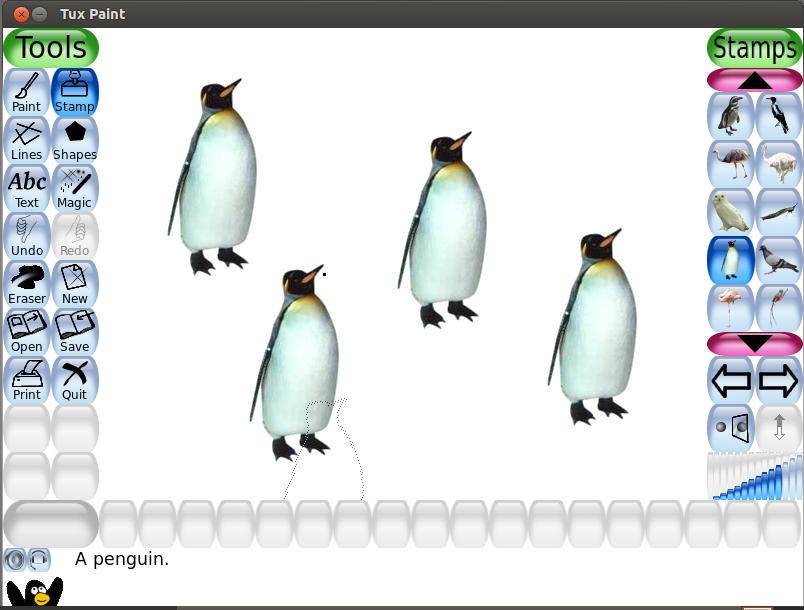
LibreCAD, opensource CAD application for 2D design.
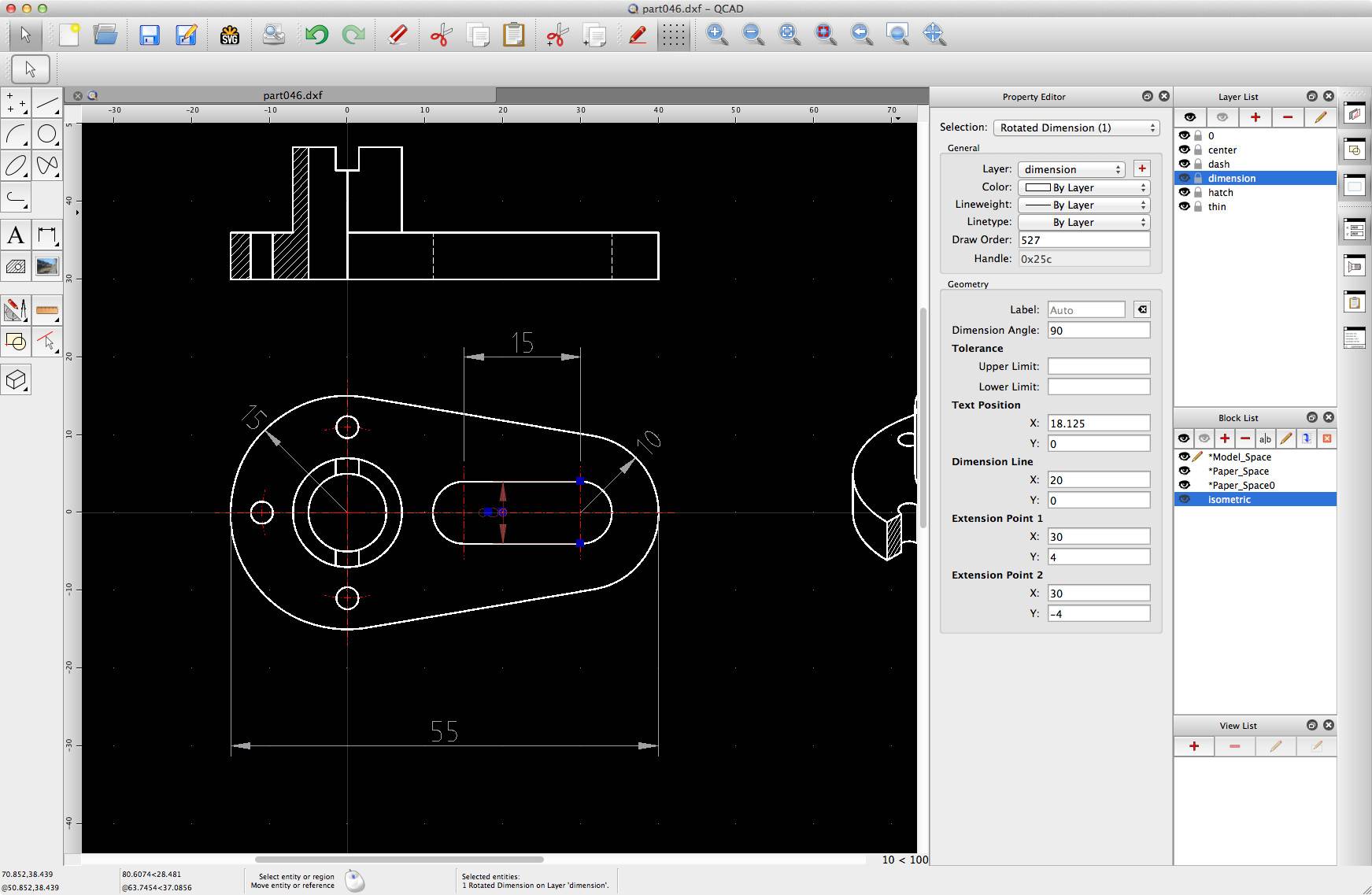
Administrators
Laboratory administrators, in addition to normal hardware and network maintenance, will be able to handle all the functionality provided by the solution through a convenient and intuitive web interface.
We spent a lot of time to selecting and testing different Linux server distribution, because we wanted to add to the known stability and solidity, proper of GNU/Linux, also the ease of access and management, even from people without sysadmin professional knowledge.
So we choose Nethserver Linux, a distribution developed by an Italian company in Pesaro and based on CentOS.
Below, some screenshots of the tool made available to the lab administrators. The images give an idea of how managing the lab is truly powerful and simple at the same time.
Nethserver Dashboard: overview of the status of the server and the services offered.
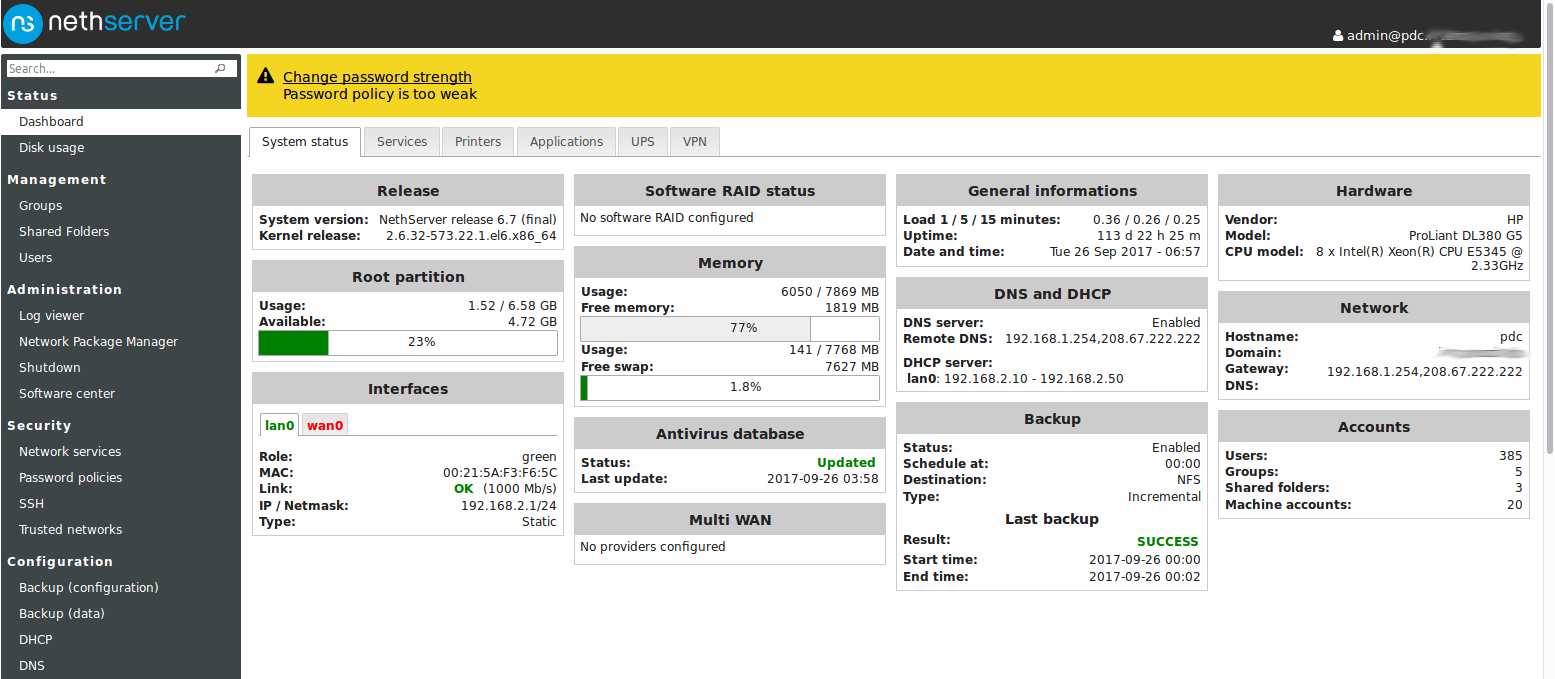
Manage users and groups. Additional functionality is also provided for bulk importing of users from a spreadsheet, a feature that is useful especially at the beginning of the year when there are a lot of new students.

Web Content Filter: administrators will have a powerful tool to indicate which web content can be accessed and what are to be blocked, based on categorization of the websites.
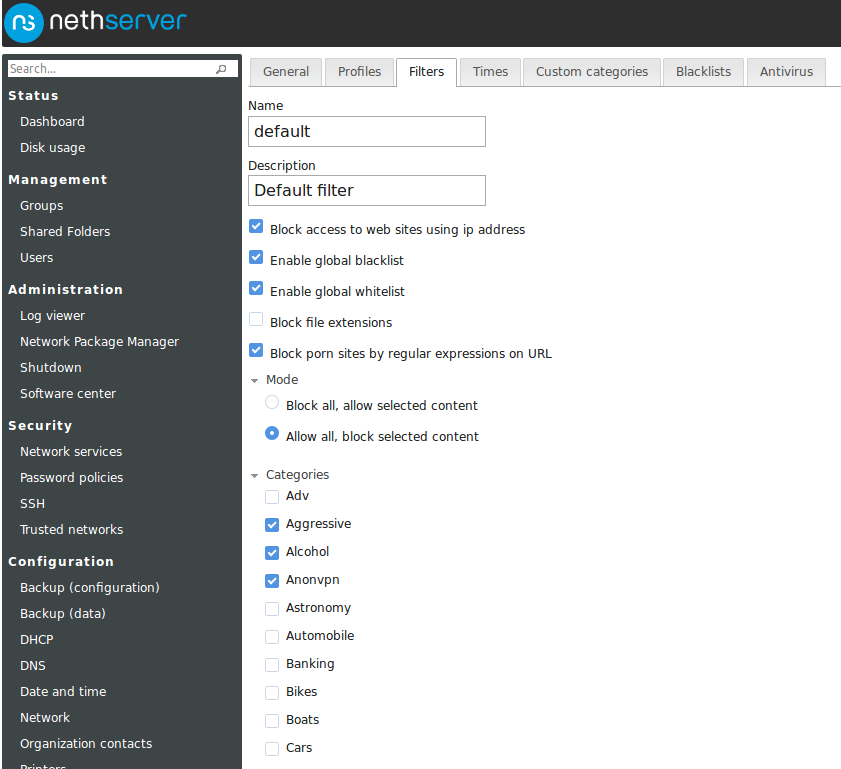
Network Package Manager to install/remove on all client PCs. Through this interface, administrators can set which applications should be present (in addition to pre-installed ones) or removed on all networked PCs. Each changes indicated by this tool will automatically be applied on each single PC at its restart.
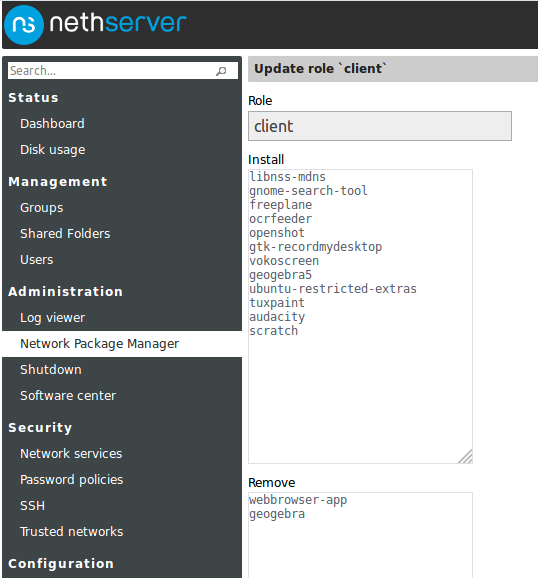
In addition to simplifying server management, LibreSchool also helps administrators in deploying client PCs. We have studied and developed a solution by which any PC, started according to a particular procedure, is automatically installed/reinstalled and configured, by taking instructions on configuration from the server.
At startup with the procedure that will be explained during the training, you will see a screen similar to the following:
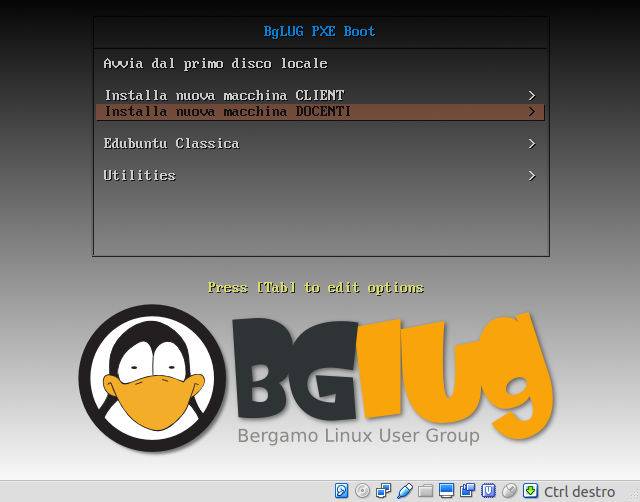
After making the few necessary choices by the administrator, the installation starts without requiring any other manual interaction. Once the installation is completed, the PC will be configured and ready to use as all other PCs in the lab.